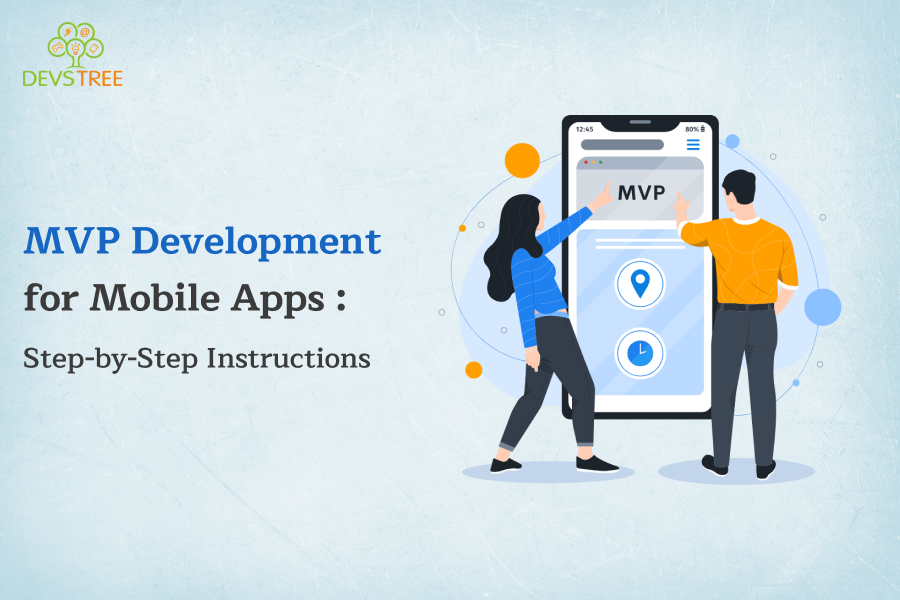
Developing a mobile app is an exciting but challenging process. To ensure your app’s success without sinking too much time and money into the initial stages, many developers turn to building a Minimum Viable Product (MVP). An MVP allows you to launch a simplified version of your app to test its core functionality and gather valuable user feedback. This blog will guide you through the step-by-step process of developing an MVP for your mobile app.
What is an MVP?
Before diving into the steps, it’s crucial to understand what an MVP is. A Minimum Viable Product is the most basic version of your app that still delivers enough value to users. It includes only the core features necessary to solve a specific problem or fulfill a need, allowing you to test the concept in the market and gather user feedback for future development.
Step 1: Define Your App’s Purpose and Goals
The first step in MVP development is to clearly define the purpose of your mobile app. What problem is it solving? Who is your target audience? What are the primary goals you want to achieve? Having a well-defined purpose and set of goals will help you stay focused on what really matters in the initial stages of development.
Step 2: Identify Core Features
Once you have a clear understanding of your app’s purpose, it’s time to identify the core features that will make up your MVP. Focus on the functionalities that are essential to solving the main problem or fulfilling the key needs of your users. Avoid adding unnecessary features that can be developed later as you gather more insights from users.
Step 3: Conduct Market Research
Market research is a crucial step in MVP development. It helps you understand your competitors, identify gaps in the market, and gather insights into what your target audience expects from a solution like yours. Analyze similar apps, read user reviews, and study market trends to refine your MVP concept.
Step 4: Create a User Flow
A user flow is a visual representation of the steps a user takes to complete a task within your app. By mapping out the user journey, you can identify the most critical touchpoints and ensure that the MVP provides a smooth and intuitive experience. This step is essential for determining how your core features will interact and how users will navigate through your app.
Step 5: Design the MVP
With a clear user flow in place, you can start designing your MVP. Focus on creating a simple, user-friendly interface that highlights the core features. Since the MVP is a basic version of your app, the design should be clean and functional. At this stage, avoid overcomplicating the design with unnecessary details.
Step 6: Develop the MVP
Now comes the actual development phase. Work closely with your development team to build the MVP, ensuring that the core features are implemented effectively. It’s essential to maintain open communication during this phase to address any issues that may arise and to stay aligned with the project’s goals.
Step 7: Test the MVP
Before launching your MVP, it’s crucial to test it thoroughly. Conduct both functional and usability testing to identify any bugs, glitches, or areas for improvement. User feedback at this stage is invaluable, so consider running a beta test with a small group of users to gather insights and make necessary adjustments.
Step 8: Launch the MVP
Once your MVP has been tested and refined, it’s time to launch it in the market. Keep in mind that the goal of the MVP is not just to attract users but also to gather valuable feedback. Use analytics tools to track user behavior, engagement, and satisfaction, and encourage users to provide feedback on their experience.
Step 9: Gather Feedback and Iterate
The final step in the MVP development process is to gather feedback and iterate on your app. Use the insights gained from user feedback to identify areas for improvement, add new features, and refine the overall user experience. Remember that the MVP is just the beginning of your app’s journey. Continuous iteration based on user feedback will help you develop a product that meets the needs of your audience and stands out in the market.
Conclusion
Developing an MVP for your mobile app is a strategic way to test your concept, engage users, and make informed decisions about future development. By following these step-by-step instructions, you can create a focused, user-centric MVP that lays the foundation for your app’s success. Remember to stay agile, listen to your users, and be ready to adapt as you move forward with your app’s development.
By taking a methodical approach to MVP development, you’re not just building an app—you’re setting the stage for a product that can evolve and thrive in a competitive marketplace.
